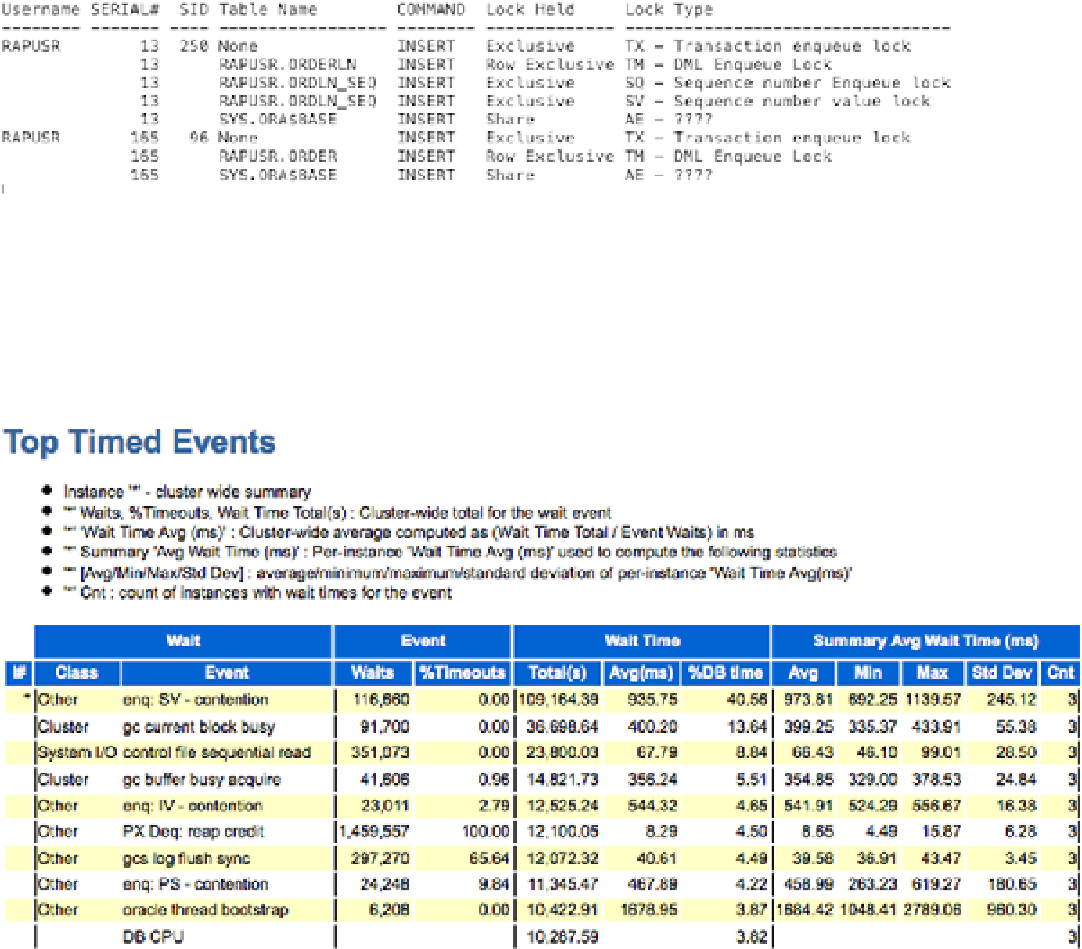Database Reference
In-Depth Information
When sequences are defined with
CACHE
and
ORDER
clauses in RAC environment, and when multiple instances
are inserting rows using the same
SEQUENCE
definition, the session requesting for the
NEXTVAL
of the sequence requires
an exclusive access to the sequence. It requests a SV lock before inserting or making updates to the sequence value in
the shared pool. Frequent requests from multiple instances for the
NEXTVAL
can cause severe contention and sessions
may have to wait for an
Enq: SV - contention
event (Figure
9-3
), followed by other wait events due to the repel effect
such as
gc current block busy
and
gc buffer busy acquire
.
Figure 9-3.
AWR report: Top Timed Events
While sequences can be defined with
CACHE
and
ORDER
clauses, performance impacts should be ascertained
before implementing this option. In a RAC environment, unless absolutely required to satisfy business requirements,
it's a good practice to use the
CACHE
and
NOORDER
clause when creating sequences.
Highly insert intensive tables that use sequences numbers for surrogate keys should have sufficiently high
CACHE
size. This will reduce the frequent updates to the dictionary cache. The dictionary cache will be updated only once
with the new high watermark; in other words, when a
NEXTVAL
is requested, the row cache value of the sequence is
changed in the dictionary cache and increased by the cache value.
Step 4
Modify the sequence definitions to increase the
CACHE_SIZE
for the demanding sequence definitions; setting them to
NOORDER
will reduce the contention and improve the overall response times.

Search WWH ::

Custom Search